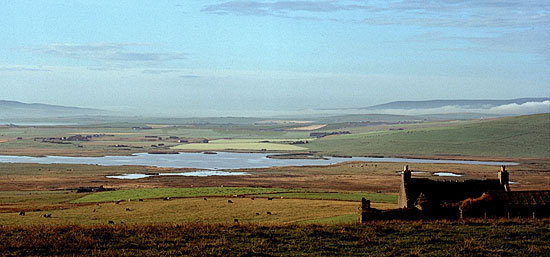


|
An Orkney Scrapbook - The View from Montreal |
|
 |
|
The hillside in front of us is studded with tumuli above the Hut Circles and Field System at Spurdagrove, down by the Loons. On the other side of the loch of Isbuster are more tumuli and the Knowe of Scorn and Knowe of Holland, with the Knowes of Yonbell (that curious name!) over the ridge. Isbuster itself is a township which was swallowed up by the wartime airfield and the modern archaeological remains from that airfield are very clear to see in the middle distance beyond the loch. What is not visible with the naked eye, but can be clearly made out through binoculars in the far distance is the ceremonial landscape around the Loch of Stenness with the Ring of Brodgar, the Stones of Stenness and the megalithic tomb of Maeshowe - while Scapa Flow is hidden by the low cloud on that particular morning. The assemblage of famous neolithic structures is the jewel in Orkney's crown, now properly recognised as a World Heritage Site, thanks to the hard work put into the bid by so many, including Daphne Lorimer. This West Mainland tapestry of past and present settlement richness reflects the world-famous status of Orkney's archaeology which Daphne has personally fostered and successfully promoted with her vision and energy. Barbara and Robert Crawford |
|

